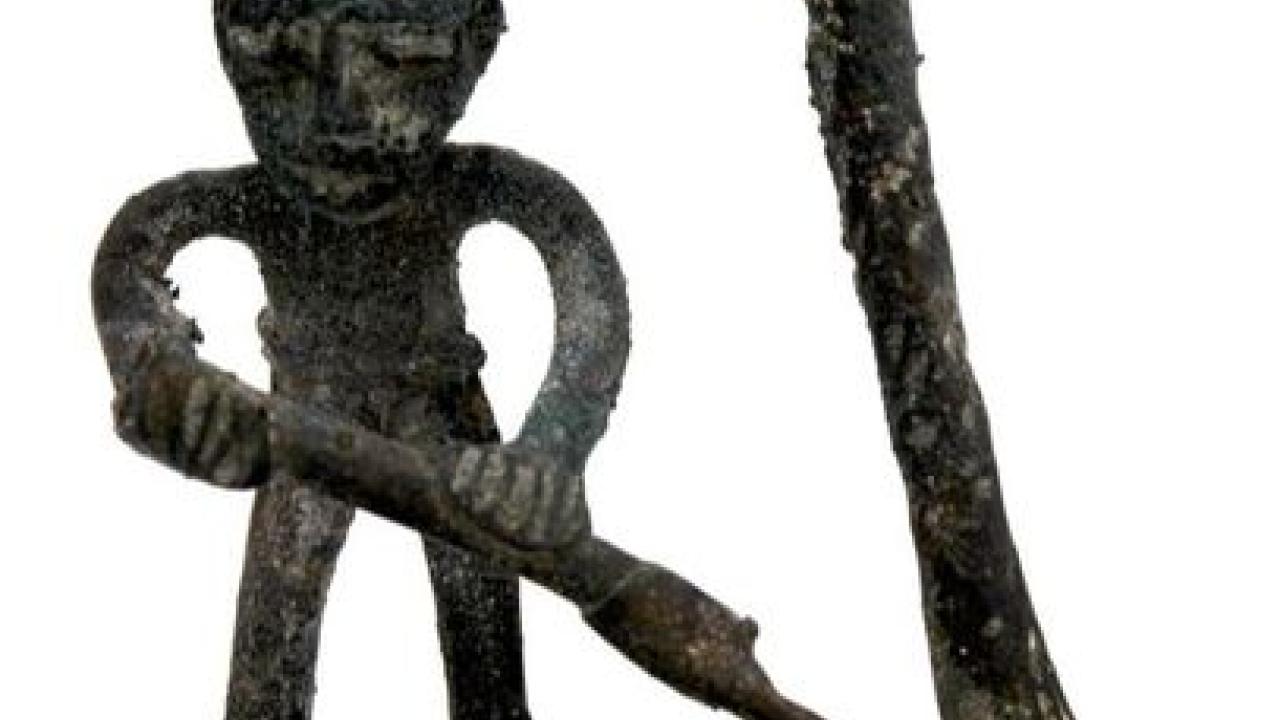
February 23, 2018: Ashanti Gold Weight
This Ashanti bronze figure (43-63) was forged in Ghana sometime between the 14th and 19th century. The earliest figures were simple geometric shapes, sometime incised with linear patterns. These earliest weights were made between the 14th and 17th centuries. This figure belongs to a later period (17th- 19th century) after metalworking skills of the region had improved. Millions of these scale weights were forged over those centuries.
These figures, called abrammou, were used as scale weights for gold dust: the currency of the period. This particular figure depicts a farmer digging out a palm tree, but the figures could represent almost anything (animals, plants, everyday implements, and animated scenes from daily life). They could be realistic like this one or more stylized.
The weights were usually cast using the lost wax method. The metal smith would carve a figure or animal out of wax and then press soft clay around the wax. When the clay was baked, the wax would melt away, leaving a hollow core. The artist would pour liquid metal into the mold. When the metal in the mold had set, the clay would be broken away, and the bronze figure would be complete. The oldest examples of the lost wax technique have been dated to around 4500 BCE.
Ashanti men collected sets of these weights and the amount assigned to each weight was known only to its owner—a specific figure did not represent a specific weight. The figures usually had some sentimental value to the smith who forged them. When the weights were used in a commercial transaction, both the buyer and seller would use their own sets of weights to come to an agreement.
Ashanti men collected sets of these weights— averaging about 40-60 weights to a set, but sometimes totaling as many as hundreds of weights— and kept them in futuo (treasury) bags. The term futuo encompasses the full set of gold-weighing equipment: not only the weights, but also the scales, gold dust scoops, spoons and assorted bags and boxes for storing the dust and nuggets. Wealthy men would hire bearers to carry around their futuo for them. These items were used as a status symbol.
The use of these weights ceased in 1896 with the establishment of colonial control in the area and a ban on gold dust as currency.